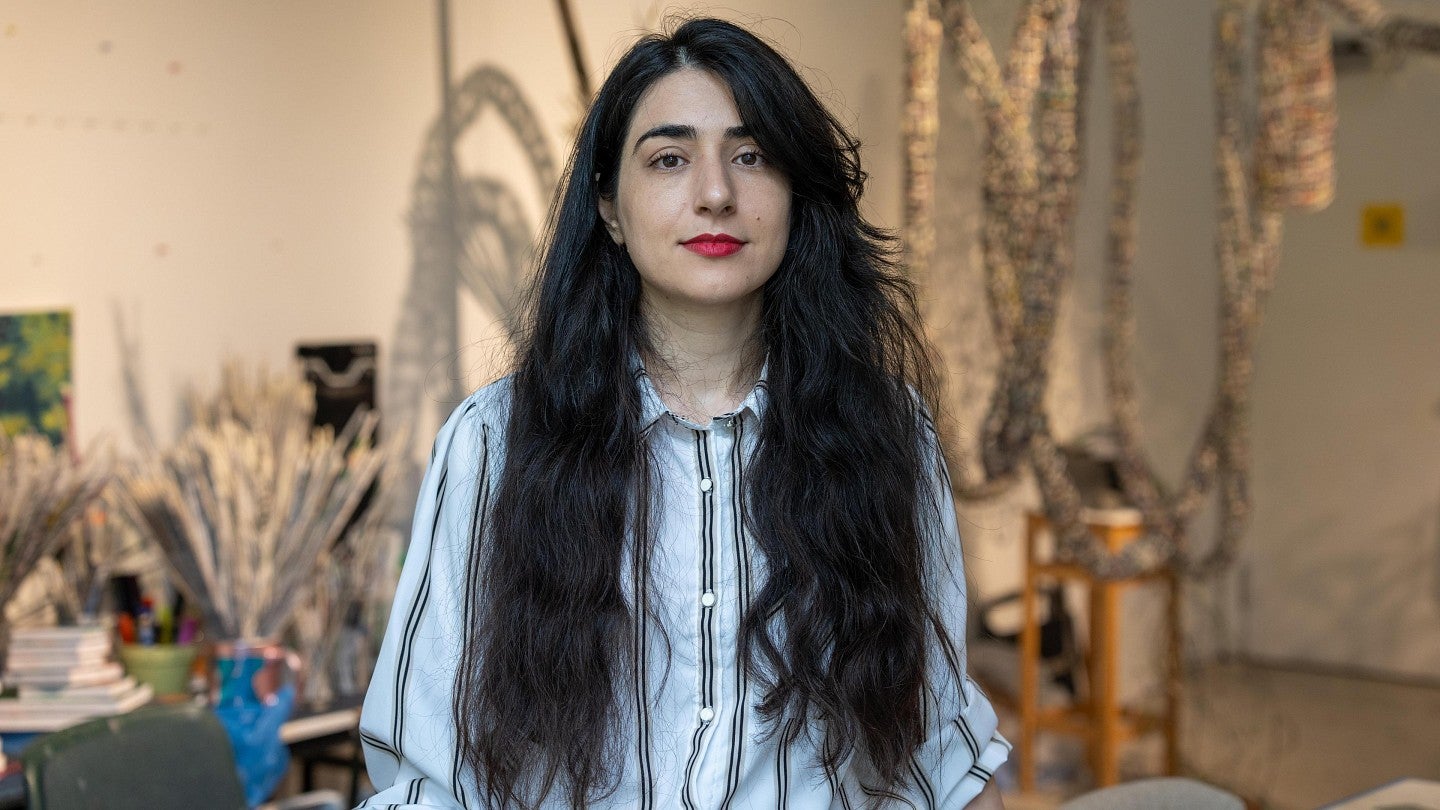
Reflection on identity: student bridges cultures with mirror art
Iranian Parisa Garazhian finds belonging at the UO through creativity and connections with staff
Look closely at the new mirror in Global Scholars Hall and you’ll see more than your reflection. You’ll see two cultures combined harmoniously in a work of art.
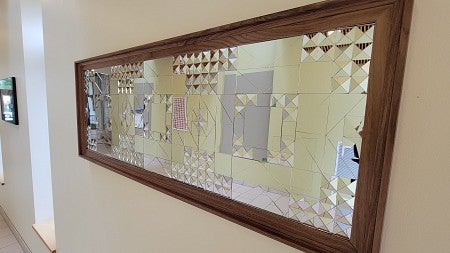
The mirror is made of intricately cut pieces, exemplifying an Iranian artform that transforms the reflective surfaces into luminous decorations for palaces and religious buildings. But the shape of each piece is inspired by American quilting patterns, each so distinctive it has a name — “Log Cabin,” for example, or “Ohio Star.”
The artwork is “Mirror Quilt,” an exploration of identity by Parisa Garazhian, an international student who has found a place for herself at the University of Oregon.
Garazhian is one of five student artists in Flourishing by Art, a new art initiative that supports the university’s strategic goal of helping everyone at the UO to flourish.
Under the joint project of Housing Capital Construction and the Associated Students of the University of Oregon, Garazhian and the other artists recently completed works for three residence halls.
Key to the university’s flourishing goal is creating a culture of belonging for students, staff and faculty — a sense that all are welcome at the UO. The art initiative fosters belonging by showcasing student works and creating connections between artists, audiences and the university personnel who made the project possible.
Garazhian was born in Neyshabour, Iran, and studied at one of the country’s premier institutions for art education. She joined the UO’s master of fine arts program in 2023, but not without trepidation: leaving the world she knew for one she hardly knew at all caused her to question her sense of self.
“As an immigrant, you end up with some kind of identity thing,” she said. “I was constantly trying to find where I’m standing, who am I right now, because I’m in a totally different culture.”
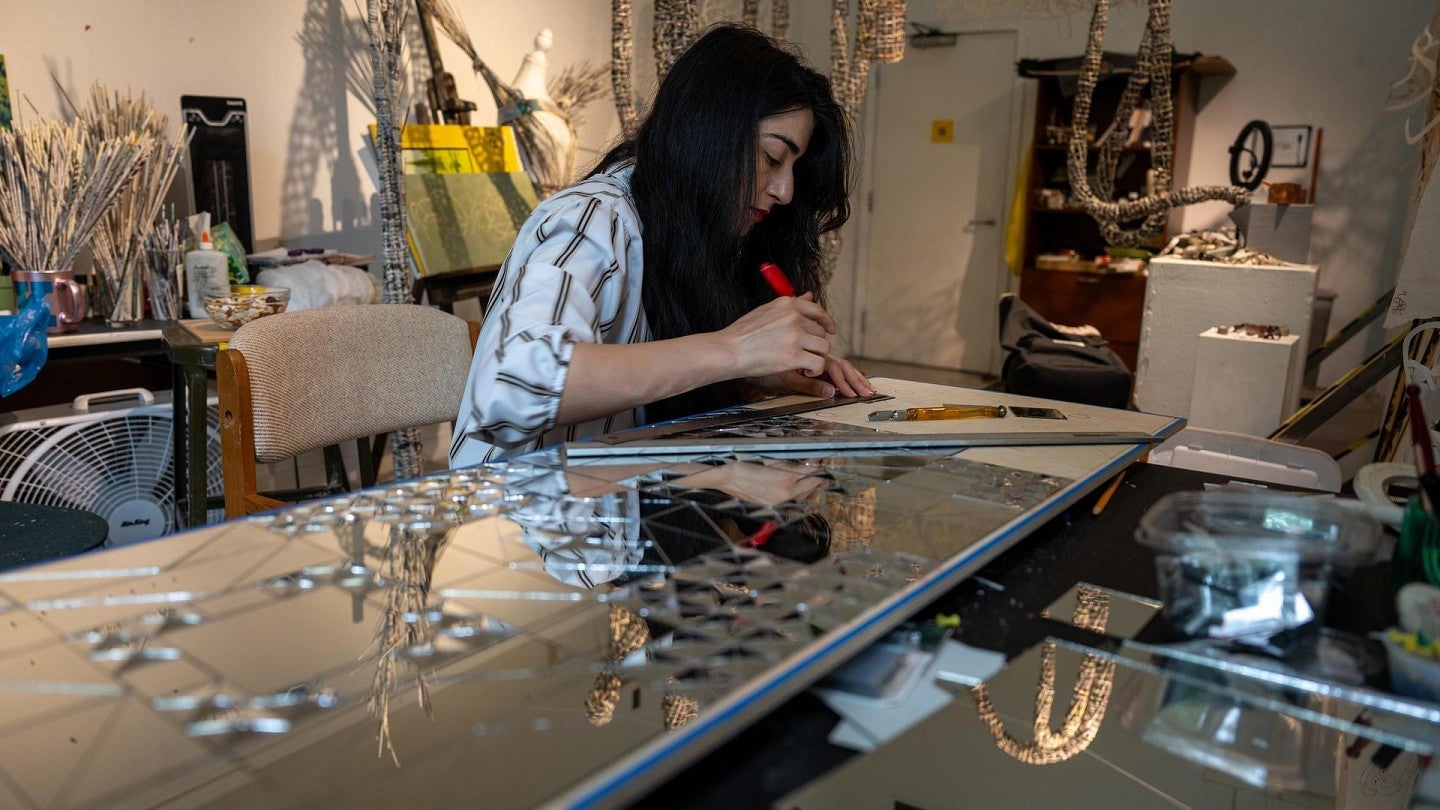
Faculty in the College of Design’s School of Art + Design helped Garazhian find herself, and a community, as a graduate student. They’re supporting her while pushing her to stretch how she thinks about her art.
Associate Professor Donald Morgan, for example, hired Garazhian as a graduate employee to teach a class. That accelerated her practice with the English language and development of organizational and time management skills that also serve her as an artist.
“Parisa is a gifted artist and educator,” Morgan said. “Given her intelligence and outgoing personality, it comes as no surprise that her students enjoy her classes so much.”
Garazhian learned to think deeply about her art and different perspectives of it while working closely with Professor Tannaz Farsi. “One of my favorite things about working with Parisa,” Farsi said, “is her intensity and love of expressing herself through her artwork.”
Meanwhile, Professor Brian Gillis, a mentor and chair of Garazhian’s thesis committee, has guided her considerable ability with crafts while helping her, as she put it, “clear my mind when it gets foggy.”
Gillis sees in Garazhian the dedication necessary for a career in art and he’s inspired by the sincerity she brings to her education.
“If I lecture on something, she’ll follow up with questions — and it’s not to kiss ass, it’s because she cares,” he said. “It’s a legitimate sharing of space [between teacher and student]. In an age where we’re more and more distant, she’s a pleasure to be around because she connects.”
Garazhian has also found connections in work both practical and surprising for an artist: paint crew.
During summer 2024, Garazhian was a member of the student team that painted residence halls and other facilities under the management of paint coordinator Rainy Gross of University Housing.
Industrial painting shares little with the fine art of applying brush to canvas, of course. But Garazhian wanted to be “close to the paint,” she said, and she suspected she might pick up a few pointers that could inform her work with murals — how to prep a wall with blemishes, for example.
With paint crew, Garazhian found a home away from home: a “beautiful culture,” she said, of fun, welcoming people, barbecues and, in Gross, a tirelessly supportive supervisor.
“Every one of us was in that place to learn from her,” Garazhian said. “She, with a teacher’s patience, gave us all the information we needed to know and guided us through how to do the work in the very best way. She always told us, ‘You can always ask me a question, even if you feel like it’s the most stupid question in the world.’
“As an international student, I never felt like, ‘Oh, Parisa, don’t ask that question, it might sound stupid and people are going to judge you,’” she continued. “We had a safe place there.”
“Students on my crew come from all over the world,” Gross said. “I want them to know that they matter and that they are respected. We are all part of this wonderful diverse land, and we can learn from them as well as try to give them a great experience here in the US and at the U of O.”
There is a second feature of “Mirror Quilt” just as important as its glass surface in symbolizing the home between cultures Garazhian has found at the UO: its frame, made of walnut.
When carpenter Sebastian Kuhn of University Housing asked Garazhian what wood he should use to enclose the piece, she shared a story she’d been told as a child, about the great value of the wood of a walnut tree — greater even than that of the edible nuts that fall from it.
That made walnut the obvious pick for Kuhn, who said he is inspired by Garazhian’s art and was “really excited” to contribute. Garazhian is excited, as well.
“My work is something like the unity between two cultures,” she said, “and Sebastian is going to use American walnut. So we’re going to end up with a knot between two cultures.”
Flourishing by Art student profiles
The Workplace e-newsletter — emailed Tuesdays to staff and faculty — is featuring the student artists of Flourishing by Art.
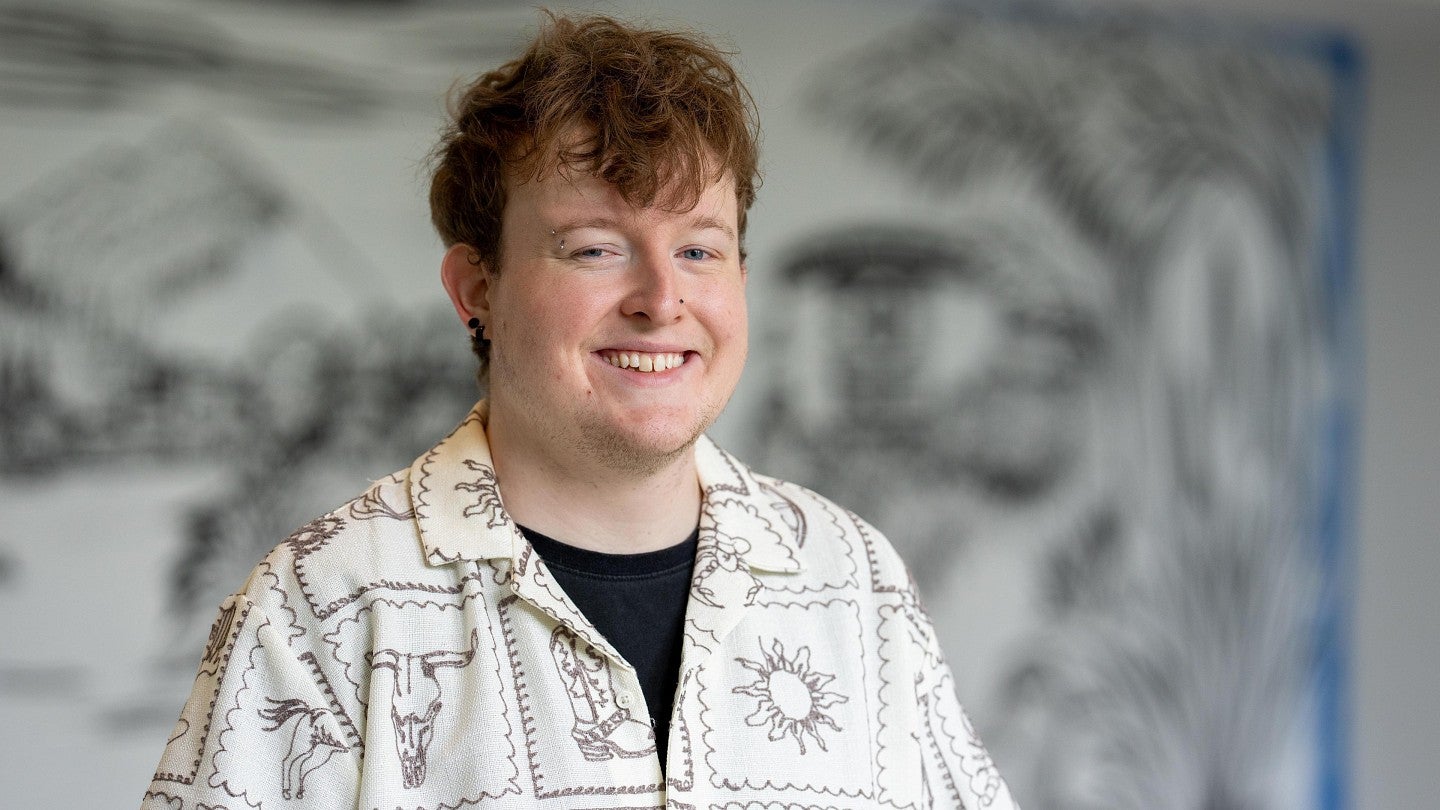
Oct. 7: Professional artist Anthony Michael Ryder is coping with the loss of his mother. The artistic process has given him catharsis and healing connections within the university community.
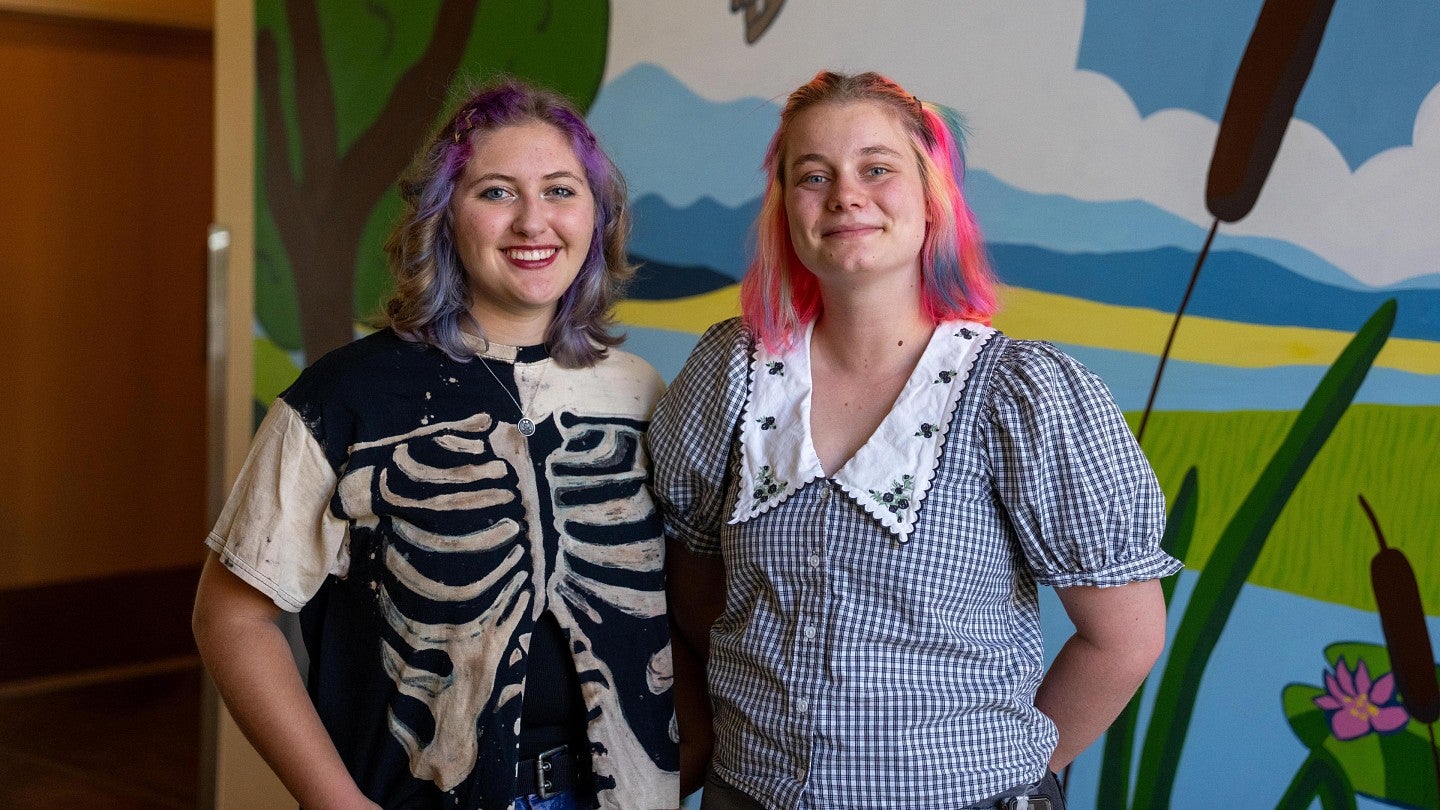
Oct. 21: Lucy Rutherford (black-and-white T-shirt) and Dani Jacobs have been friends and artists since middle school. They brought divergent artistic approaches to their first major collaboration.
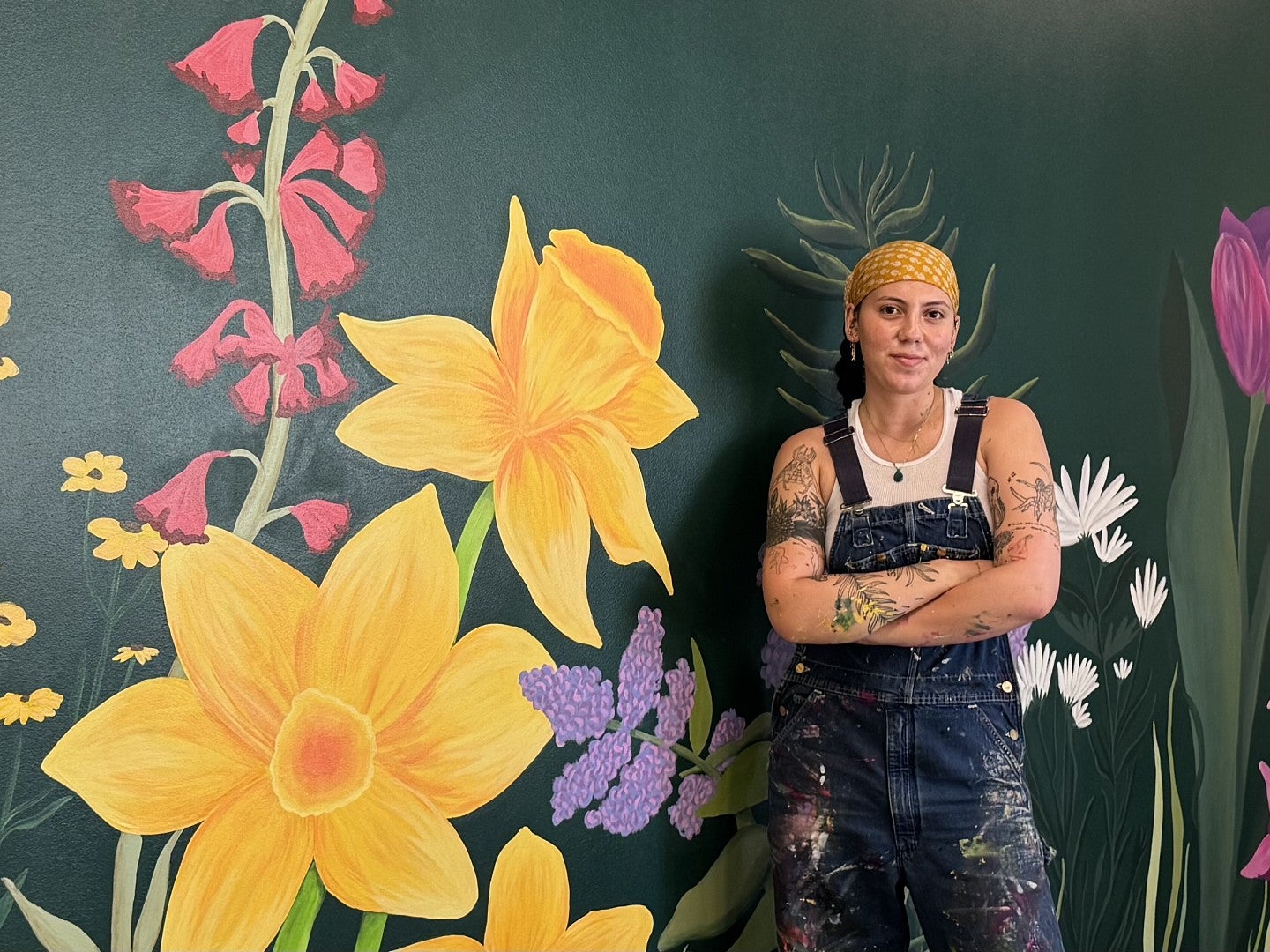
Oct. 28: Decorative painter Stella Prichard is driven to create — and to critique her creations. Her mural was the latest step on a path of learning to trust her decisions as an artist. (credit: tucker.grt@icloud.com)
See Flourishing by Art
Faculty, staff, students and the general public can view students’ works.

“Flora and Fauna”: Global Scholars Hall, mezzanine, 8 a.m. to 5 p.m., Monday through Friday during the academic year, excluding breaks.
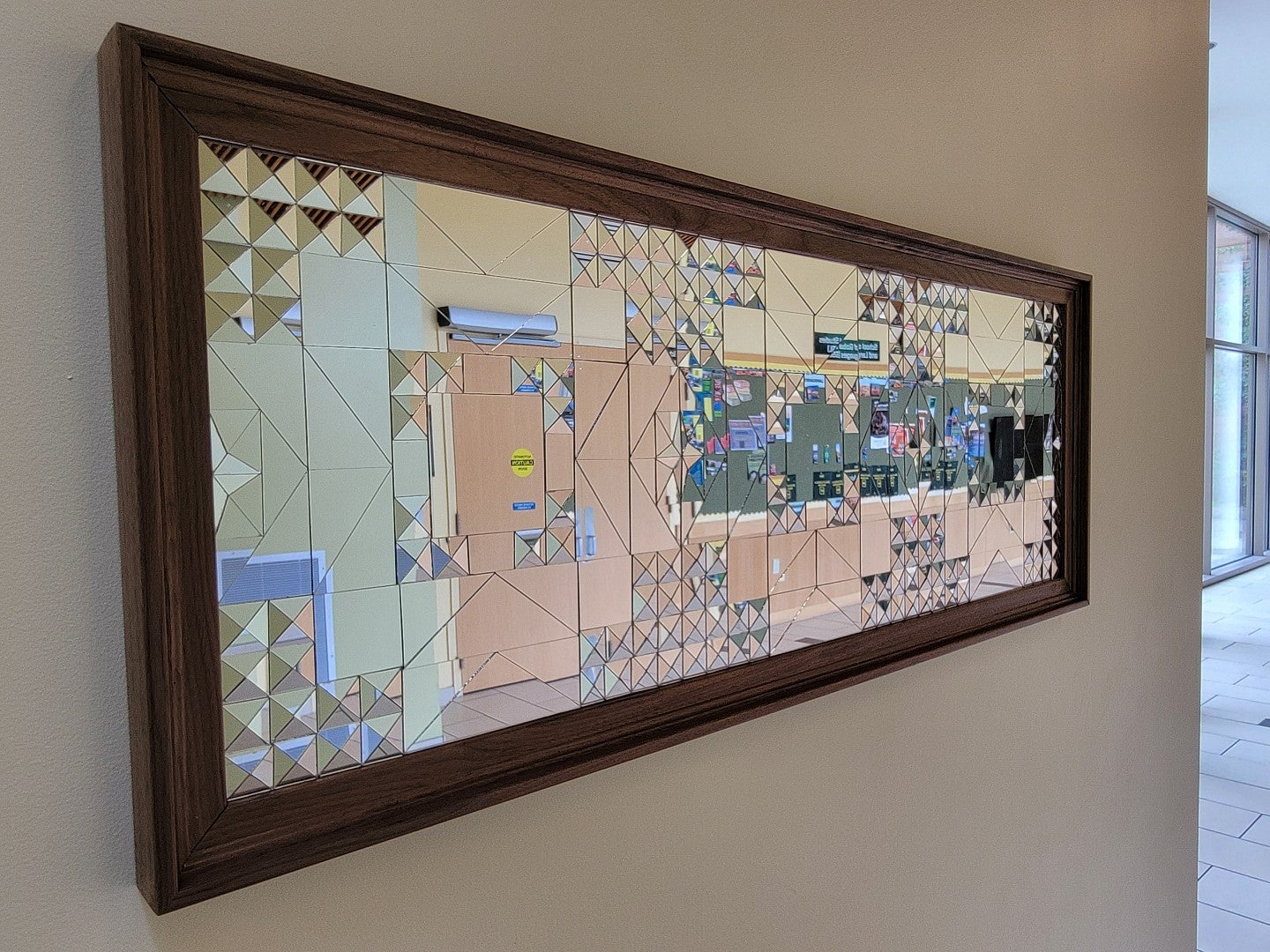
“Mirror Quilt”: Global Scholars Hall, first floor, 8 a.m. to 5 p.m., Monday through Friday during the academic year, excluding breaks.
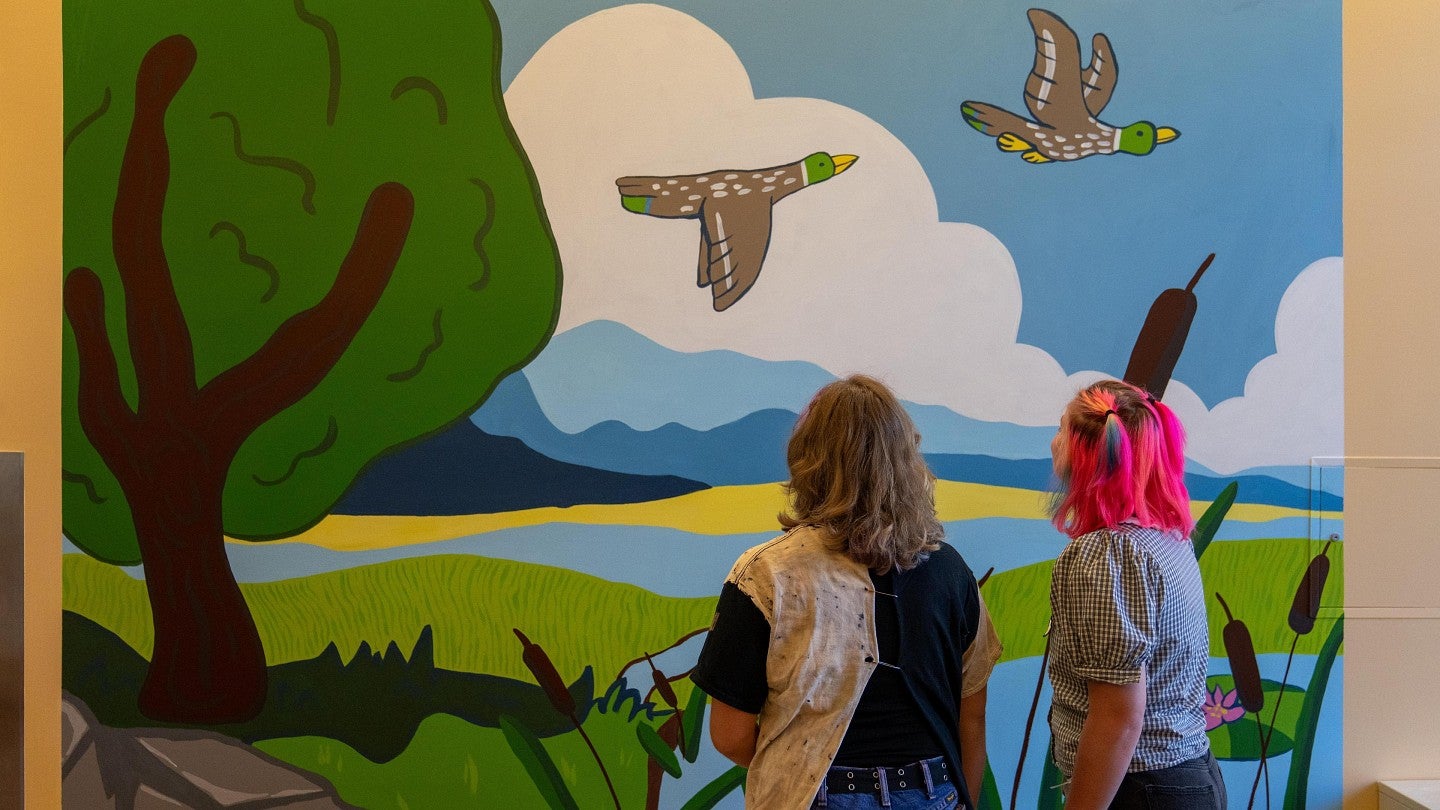
“Two Birds, One Stone”: Living Learning Center South, west hall, first floor, 10 a.m. to 9 p.m. weekdays and noon to 7 p.m. weekends during the academic year, excluding breaks.

